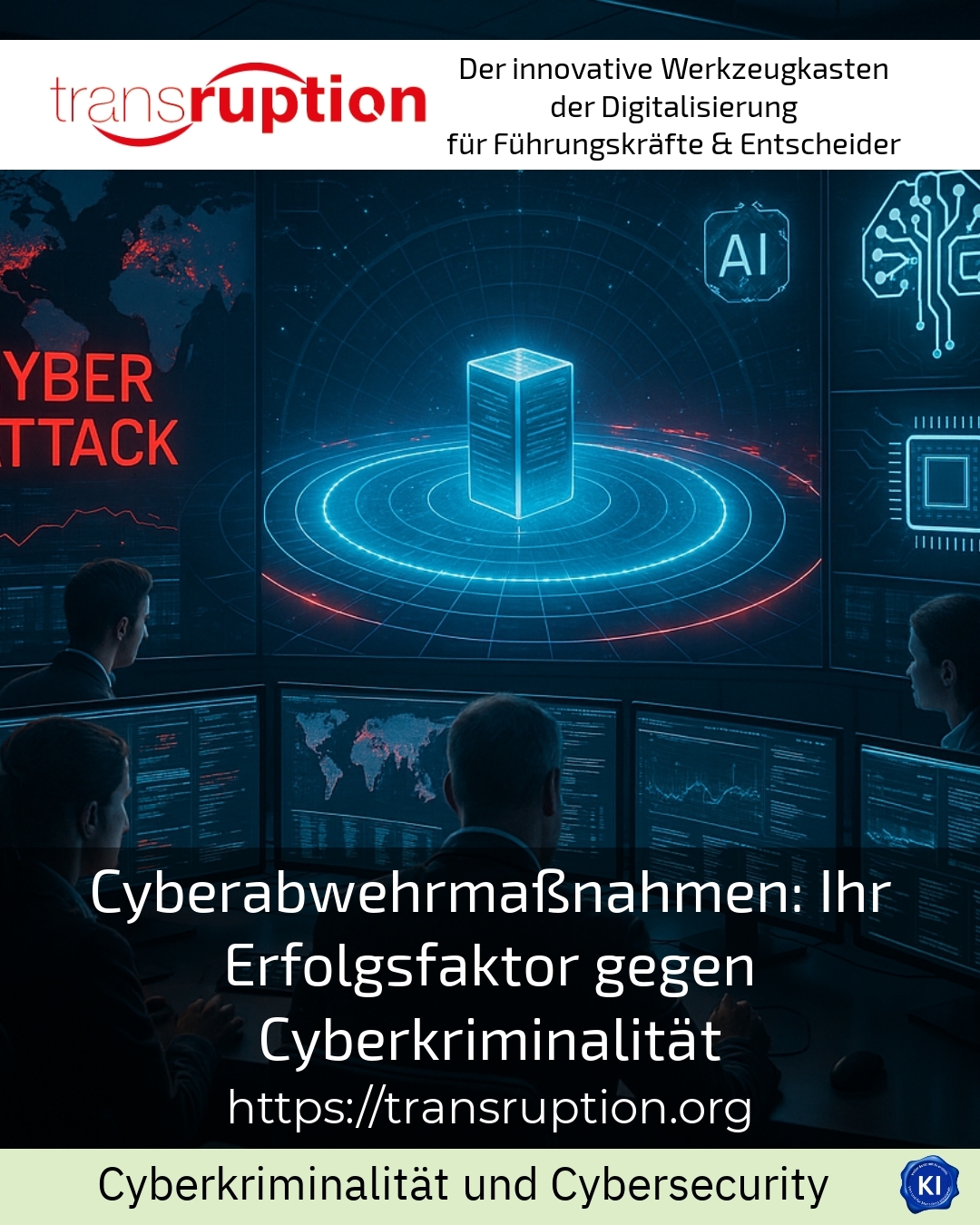In today's digitally networked world, cyber defence measures are becoming increasingly important as an essential success factor against cybercrime. Companies and organisations are faced with the challenge of protecting their IT infrastructure against increasingly sophisticated attacks. Targeted cyber defence measures help to identify and ward off digital threats at an early stage and increase information security in the long term. In this article, you will learn practical tips and examples of how the use of such measures can effectively support the protection of your systems and data.
Cyber defence measures at a glance: Basics and practical examples
Cyber defence encompasses a wide range of technical and organisational procedures that improve the protection of networks, end devices and applications. Traditional protection mechanisms such as firewalls and antivirus software are still among the cornerstones. In addition, innovative solutions such as Endpoint Detection and Response (EDR) are used today. Companies in the financial sector, for example, use EDR systems that detect anomalies in user behaviour and use artificial intelligence to automatically block denied access attempts.
The public sector shows how consistent updating of server software and systematic patch management minimise security vulnerabilities. IT managers there often report successes in reducing attack surfaces through timely software updates.
The automotive industry provides another example. Here, cyber defence measures are enhanced by network segmentation so that sensitive areas such as the production of vehicle systems are separated from general IT traffic. This approach makes it significantly more difficult for hackers to move laterally within the network.
How modern technologies strengthen cyber defence measures
Many companies today rely on encryption technologies that protect both data transmissions and data at rest. Algorithms are used that prevent the data from being read even in the event of a successful attack. IT service providers, for example, integrate encryption into their cloud services in order to guarantee data protection for customer data.
Multi-factor authentication (MFA) is also becoming increasingly important. For example, a medium-sized software developer requires its employees to use a second level of authentication in addition to the password, for example via an authenticator app. This cyber defence measure significantly reduces the risk of stolen access data.
Deception technology, i.e. deception methods such as honeypots, are also used occasionally. An international logistics group uses this technology to lure attackers to fake systems and thus gain valuable time for countermeasures.
Human factors as the key to cyber defence
Technical measures alone are not enough. Raising awareness and training employees are among the most effective cyber defence measures. It is known that phishing attacks in particular often lead to success via social engineering. This is why companies in the healthcare sector invest in regular awareness training that familiarises employees with realistic scenarios. This enables them to recognise fraudulent emails more reliably and react accordingly.
Retail companies report that these training programmes have demonstrably reduced the number of security incidents. At the same time, they promote a security culture within the company that increases the sense of responsibility for protecting all systems.
BEST PRACTICE at the customer (name hidden due to NDA contract) An international financial services provider was able to optimise its incident response processes through accompanying cyber defence measures. The combination of technical monitoring, automatic detection of security incidents and targeted employee training contributes significantly to rapid damage limitation and strengthens resilience to complex attacks.
Cyber defence measures in practice: concrete tips for implementation
It is advisable for companies to pursue a multi-layered strategy. Here are some practical recommendations:
- Segment networks to make it more difficult for attacks to spread.
- Install regular updates and patches to close known vulnerabilities.
- Use multi-factor authentication consistently to better protect access.
- Continuously train employees through awareness programmes.
- Use of technologies to detect unusual activities such as EDR or SIEM systems.
These measures can be found, for example, in church communities that have to protect their systems with limited IT resources. There, simple firewalls and training on the secure use of passwords provide comprehensive protection.
Small craft businesses are also increasingly integrating email filters against phishing and malware and report significant improvements in IT security.
BEST PRACTICE at the customer (name hidden due to NDA contract) By introducing a comprehensive cyber defence concept that includes regular employee training and emergency drills in addition to technical solutions, a medium-sized mechanical engineering company was able to significantly reduce the number of successful cyber attacks and considerably speed up the detection of and response to incidents.
My analysis
Today, cyber defence measures are indispensable companions when it comes to arming oneself against the growing threat of cybercrime. They help companies and organisations to make their digital infrastructure robust and resilient. It is clear that a combination of technology, people and processes promises the greatest success. In practice, numerous examples from a wide range of industries show that cyber defence measures provide concrete impetus and often increase security. Transruption coaching can provide you with effective support in the planning and implementation of your cyber defence projects in order to develop customised, sustainable solutions.
Further links from the text above:
Cyber defence - Wikipedia [1]
Cybersecurity: definition, threats and protective measures - Myra Security GmbH [2]
What is cybersecurity? Methods & Measures - NETGO [3]
Methods of cybercrime - BSI [5]
Cyberattacks: Methods and protection - O2 Business [8]
TOP 12 Measures in the event of cyber attacks - BSI [9]
For more information and if you have any questions, please contact
Contact us or read more blog posts on the topic
TRANSRUPTION here.















